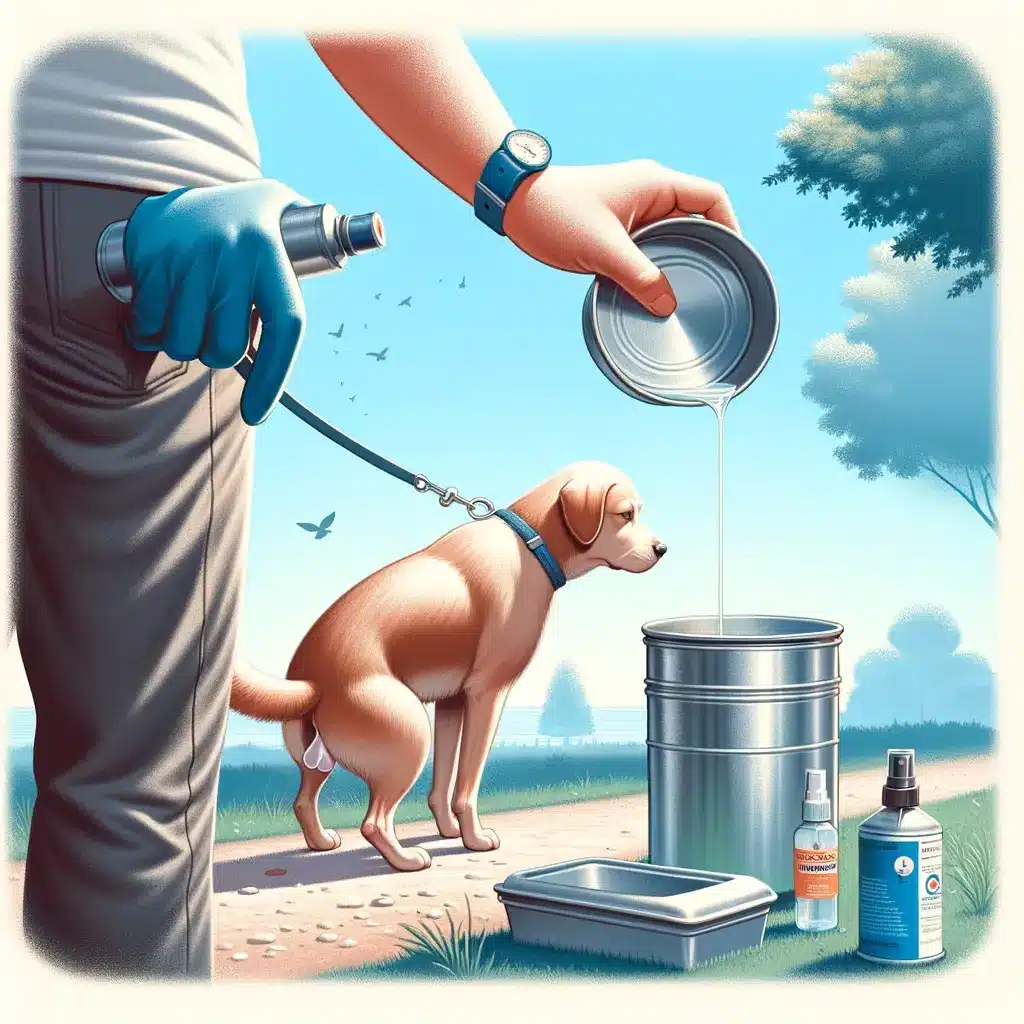Summary
Collecting your dog’s urine at home for the vet is crucial for diagnosing kidney, liver issues, diabetes, and infections. Use a clean aluminum container. Take your dog for a walk to encourage urination and position the container mid-stream. Seal and refrigerate the sample. If home collection fails, don’t worry; your vet can use painless methods like cystocentesis (needle into bladder) or catheterization (tube through urinary tract). Patience is key, but professional help is available if needed. This process aids in understanding your dog’s overall health.
Why is it Important to Take the Urine Samples of the Pet?
As per the research done on the dogs, it was found that the urine test of the Dog can tell about the entire health of the pet.
This is because the urine gets secreted from the body through the urinary tract, which is related to the kidney and liver, and thus the acidity,
This means the pH level of the urine tells about the kidney and liver condition and whether or not it is functioning properly.
Along with the health of the kidney and liver, it also detects the problems of the organ system. Also, it helps the veterinarian to detect any diabetic disease in the pet’s body, like diabetes mellitus.
Hence, from the above-discussed information, dog owners take their pets’ urine samples to check their pet’s health and take proper treatments for the disease detected.
Is the Process of Urinalysis Painful?
As per the information collected from the research done by the cynologists, information was obtained that the urinalysis process is completely pain-free, and the Dog will not experience any discomfort during the entire process.
This is because, during the urinalysis process, a small needle gets attached to a syringe directly and inserted into the lumen of the Dog’s bladder to correct the urine sample.
During the entire process, the contamination of the Dog’s urine with debris at the genitalia is avoided. Thus, the process of urinalysis is completely pain-free for your canine friend.
How to Get a Urine Samples from a Dog?
When planning a visit to the veterinarian for a proper health check-up of your Dog, your vet might often ask you to take a sample of your Dog’s urine. After hearing this, most dog owners can get confused as it sounds very tricky.
Now, collecting a dog’s urine sample is easier than it sounds. A person can get perfect in it by following some proper rules. The steps a dog owner can follow to collect samples of their Dog’s urine at home are discussed below.
Choose the Container
This is quite an important process of collecting your Dog’s urine, as the type of container will decide whether the pH level of the urine remains the same until it gets to the hands of the veterinarian. A container made of aluminum is the best option for this condition.
Do a Proper Wash of the Chosen Container
After choosing the container, cleaning it properly is the next most important step.
This is because if the container isn’t cleaned properly, the urine will get exposed to the different types of bacteria on the side of the container, causing the pH level of the urine to differ from its actual acidity.
Thus p, proper cleaning is necessary. For proper cleaning, using soapy and warm water is enough to remove the pathogens.
Go for a Walk
Now it’s time you should wait for the Dog to urine. The simplest process to do this is to walk with your canine friend, as this will make the Dog’s urine faster.
This is because most canine friends have a habit of peeing when they go for a walk outside.
So, taking your Dog for a walk can help make your Dog urinate frequently and make the process of collecting urine samples faster.
It’s suggested that the dog owner keep a leash with them during the walk to help them control the Dog when it’s about to pee.
Wait for the Dog to Squat
As we all know, we don’t have any control over the urination of the Dog. The canine friend will urinate whenever she wants, so we have no other option but to wait for the Dog to squat to urinate.
To make the canine friend understand that his owner wants him to pee, a cue word that resembles the meaning of peeing can be used, which is a good option.
Properly Place the Container
Now, the main step of the entire procedure comes. When your canine friend starts to urinate, it’s time to play your role.
All you have to do is slowly approach the Dog near the container, place the container below the urine stream, and wait until the urine is collected in the container.
Always use disinfectant spray to disinfect your hands after collecting the urine.
Cover the Dog Poop Container
After successfully collecting the urine in the container, it’s time to protect the urine samples from getting contaminated.
To prevent the urine samples from being contaminated, you can cover the container with its lead and wrap it with foil paper again.
It will ensure that no bacteria can enter through the mini gaps of the lead.
Take the Dog to the vet.
Congratulations! You are all done collecting your Dog’s urine sample.
The last step you must follow is storing it in a proper cool place until you get it to the vet.
All you have to do is keep the urine sample you collected in a room with AC or the corner of your fridge and then take it out when you head to your vet.
All the above-discussed steps depend on the experiments done by cynologists on dogs to take their urine samples.
So, if a dog owner is looking for steps to take the urine samples of their Dog at home, then the owner can completely rely on the steps mentioned above.
What if You Can’t Take Your Dog’s Urine Sample?
Most dogs often try to stop their urine for a longer period when they realize what their owner exactly wants to do.
In some severe cases, the owner can also not collect the pet’s urine sample after following all the required steps.
This can often lead the owner to question what he must do now. The only solution to this question is a visit to the vet.
If you cannot collect your canine friend’s urine sample, then there is nothing to worry about. The veterinarians are still there.
The vets have easy access to those techniques, and it can take only a few minutes to take the Dog’s urine sample.
The methods the veterinarians follow to take the urine samples of the dogs are discussed below.
Cystocentesis
In cystocentesis, a sterile needle and a syringe are used to collect the urine sample. The needle is passed through the abdominal wall to the bladder to get the sample. The best part of this process is it prevents the contamination of the urine with any other debris in the urinary tract. Thus, this kind of sample is best for checking the health of the kidney and liver.
Catheterization
In this process, a sterile catheter is used to get a urine sample from the urinary bladder.
A sterile syringe is attached to a very narrow-shaped catheter and passed through the Dog’s lower urinary passage to withdraw urine from the bladder. This process is mostly preferred in the case of male dogs.
The above-discussed steps are the most preferred steps of veterinarians to take a dog’s urine sample. So, At last, if the dog owner is not able to take the sample on their own, then the vet is there to help.
Here, we are done with the entire article and have discussed all the information to help you learn how to get urine samples from Dogdogs.
But above all, remember to be patient with your Dog. We hope that the information discussed in the article has helped you and ended your search.
Thanks for staying till the end with us and reading the whole article.


